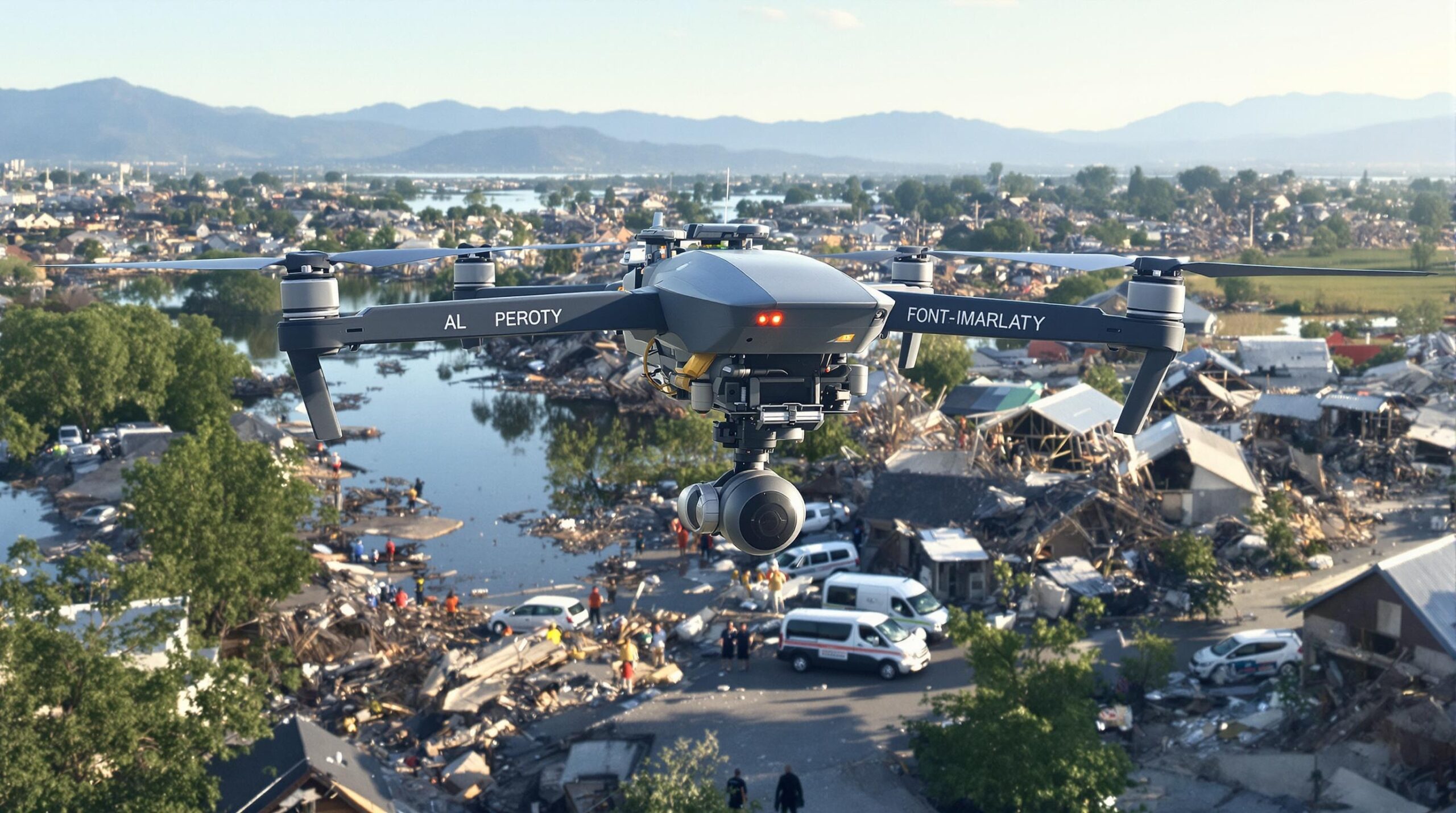Natural disasters continue to challenge emergency responders worldwide. New drone technology is poised to transform how authorities respond and save lives. These aerial devices are rapidly becoming crucial tools for disaster management teams around the globe.
The Role of Drones in Disaster Response
Drones, or Unmanned Aerial Vehicles (UAVs), provide responders with vital information during emergencies. They capture high-resolution images and gather real-time data, streamlining rescue operations and improving overall disaster management efficiency.
Unlike traditional methods, drones can access areas that may be dangerous or inaccessible to humans. Their flexibility allows immediate deployment over affected zones, allowing teams to gain a bird’s-eye view without risking personnel.
Recent Advancements in Drone Technology
Technological advances enable drones to perform more complex tasks. Enhanced battery life now allows for longer flights during critical missions. Modern drones have advanced sensors, night-vision cameras, and thermal imaging systems.
Artificial intelligence guides many of today’s drones. Algorithms enable them to avoid obstacles and adapt to shifting environmental conditions. This increased autonomy enhances their value during chaotic disaster scenarios.
Real-Time Mapping and Surveillance
Drone technology now offers sophisticated mapping capabilities. Within minutes, UAVs can build three-dimensional maps of disaster zones. Decision-makers use these detailed visuals to coordinate resources efficiently and prioritize rescue efforts.
For example, drones quickly identify blocked roads and collapsed structures after an earthquake. This enables first responders to reach survivors faster than before. Accurate mapping also aids recovery and rebuilding operations.
Improved Communication and Coordination
Disasters often disrupt traditional communication channels, complicating relief efforts. Drones equipped with network-relay technology restore lost connections in affected areas. When ground infrastructure is compromised, these flying devices act as mobile signal towers.
Teams on the ground stay connected to their command centers, enhancing coordination among rescue teams, medical personnel, and government agencies. Smooth communication also improves the effectiveness of rapid response and medical triage.
Search and Rescue Transformation
Thermal imaging drones can detect human body heat amidst debris, even at night or in poor visibility. This capacity revolutionizes search and rescue missions, as drones can cover vast territories far quicker than ground teams.
For example, drones quickly scan large regions for trapped survivors during hurricanes or floods. Rescuers receive locations in real-time, saving precious minutes. This timely response frequently means the difference between life and death.
Delivery of Essential Supplies
Some drones carry lightweight medical supplies, water, or food to isolated or hard-to-reach survivors. This function is vital when roads are blocked or impassable. Delivering insulin, blood, or antibiotics can prevent medical emergencies.
Such aerial delivery systems significantly reduce response times. Teams no longer need to wait for safe passage by land. Instead, technology ensures immediate aid reaches those in desperate need.
Challenges and Limitations
Despite impressive progress, new drone technology faces some challenges. Limited battery life restricts operation time, though new models promise improvements. Weather conditions like strong winds or heavy rain can hinder drone performance.
Regulatory limitations also affect deployment. Airspace restrictions can slow emergency responses, especially near airports or dense urban settings. Drone operators must coordinate closely with authorities to avoid interference with manned aircraft.
Synergy With Other Technologies
Integrating drones with other digital tools, such as geographic information systems and emergency response apps, creates robust disaster management networks. With improved data sharing, agencies respond more strategically and efficiently.
Drones also contribute to early warning systems. By monitoring environmental changes, they provide critical updates before disasters escalate. Engineered to work with sensors from satellites and ground stations, drones expand situational awareness.
Case Studies: Drones in Action
During the 2023 wildfires in Canada, drones mapped fire progression and highlighted escape routes for firefighters and evacuees. Authorities credited the UAVs with significantly accelerating relief logistics. Their maps were updated every hour.
After devastating earthquakes in Turkey, drones located survivors beneath rubble. These efforts resulted in hundreds of rescues within the first critical hours. Their thermal sensors detected movement undetectable by traditional equipment.
Flood-affected communities in Bangladesh have benefited from drone-delivered medicine, water, and doctors’ instructions. This approach bypassed impassable roads and reached remote villages quickly. The same technology supplied emergency PPE during the COVID-19 pandemic.
The Future of Drone-Assisted Disaster Response
Ongoing research promises even greater capabilities for future drone platforms. Developers work towards enhanced autonomy, swarm coordination, and stronger all-weather performance. Soon, artificial intelligence will allow entire fleets to work together seamlessly.
As these technologies mature, drones will likely become standard in disaster management toolkits. Training for first responders will increasingly include drone operation and data analysis, and their roles in preparedness and long-term recovery will only expand.
Conclusion: A Transformative Impact
New drone technology already has a transformative impact on disaster response strategies everywhere. Drones accelerate search and rescue, streamline logistics, and restore critical communication networks. Although challenges remain, the benefits are undeniable.
As deployment expands, communities will face disasters with improved preparedness and resilience. When tragedy strikes, technology continues to bring hope, safety, and life-saving resources. The sky is no longer the limit for disaster response.

